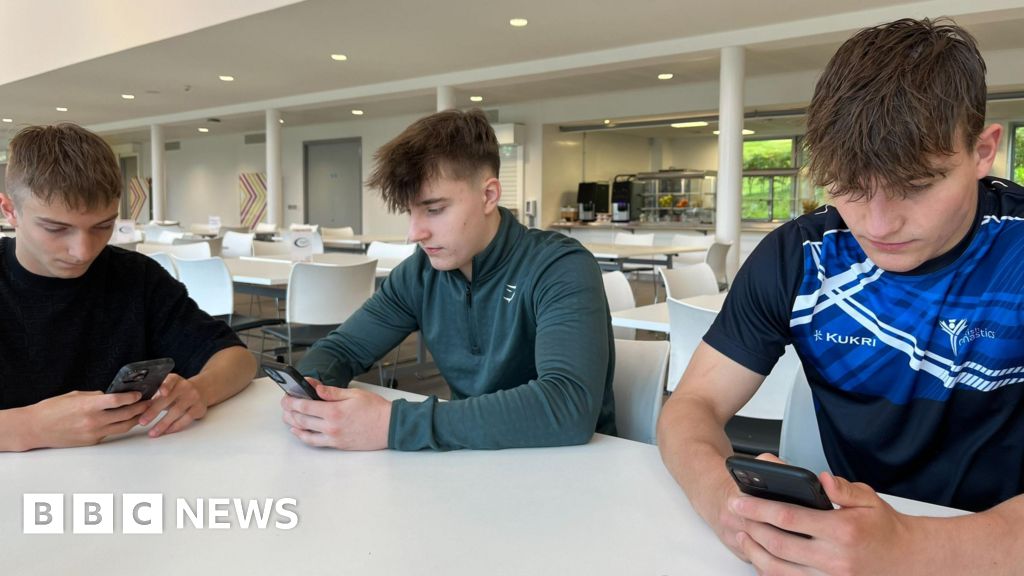- World
US, Europe lift ‘range restrictions’ on Ukraine missiles: Why it matters
时间:2010-12-5 17:23:32 作者:Science 来源:Management 查看: 评论:0内容摘要:Nor could that kind of study be accomplished quickly enough to get millions of people vaccinated before the yearly winter surge, said Dr. Jesse Goodman of Georgetown University, a former FDA vaccine chief.Nor could that kind of study be accomplished quickly enough to get millions of people vaccinated before the yearly winter surge, said Dr. Jesse Goodman of Georgetown University, a former FDA vaccine chief.
“Many of our customers were friends of the farmers. That is where the problem originated from,” said Tendai Gwaravaza, chairman of Chitungwiza Arts Center.At the center, the sound of grinders filled the air as sculptors carved. Hundreds of finished pieces, ranging from small carvings to life-sized sculptures, waited for buyers.

“The only solution now is to get out there to the markets ourselves. If we don’t, no one will,” Gwaravaza said.The Oxford exhibition represents such an opportunity for exposure, he said.It is the brainchild of the Oxford Zimbabwe Arts Partnership, formed in response to the “Rhodes Must Fall” campaign during the

protests in the U.S.The group, consisting of Zimbabwean artists, an Oxford alumnus and a professor of African history, initially envisioned a larger project titled “Oxford and Rhodes: Past, Present, and Future.” It included enclosing Rhodes’ statue in glass, installing 100 life-size bronze statues of African liberation fighters and creating a collaborative sculpture using recycled materials to represent the future.

However, the project required an estimated 200,000 pounds, far beyond available resources. Eventually, Oriel College provided 10,000 pounds for a scaled-down exhibition.
“It’s still my hope that one day it could happen, but for now we have just accepted something very small to make a start and to do something,” said Richard Pantlin, the Oxford alumnus and OZAP co-founder.Doctors said Andrews’ pig kidney turned pink and quickly began producing urine in the operating room, and since then has cleared waste normally with no signs of rejection. Andrews spent the week after his discharge in a nearby Boston hotel for daily checkups but is expected to return home to New Hampshire soon.
NYU transplant surgeon Dr. Robert Montgomery said patients like those in Mass General’s pilot study could be “the sweet spot” for early xenotransplants — not yet too sick from years of dialysis but unlikely to survive long enough for a human transplant.“Those are the patients where it really makes sense for them to try something else,” said Montgomery. His hospital is one of two that will be part of United Therapeutics’ clinical trial later this year, which will include similar patients.
It’s too early to know how Andrews will fare but if the pig kidney were to fail, Riella said he’d still qualify for a human transplant and, now deemed inactive on the transplant list, wouldn’t lose his “waiting time” that helps determine priority.Andrews now wants to return to his old dialysis clinic and “tell these people there’s hope, because no hope is not a good thing,” he said.
- 最近更新
- 2025-07-07 08:49:50Veteran has 'burning fire' to correct pension 'robbery'
- 2025-07-07 08:49:50Ukraine's audacious drone attack sends critical message to Russia - and the West
- 2025-07-07 08:49:50International Tea Day: Spilling the tea on unusual brews around the world
- 2025-07-07 08:49:50Tariffs court fight threatens Trump's power to wield his favourite economic weapon
- 2025-07-07 08:49:50Trump tariffs get to stay in place for now. What happens next?
- 2025-07-07 08:49:50Deadly superbugs thrive as access to antibiotics falters in India
- 2025-07-07 08:49:50Ex-DRC President Kabila holds talks in M23-held city of Goma: Reports
- 2025-07-07 08:49:50Cancer drug which could 'double survival time' rolled out
- 热门排行
- 2025-07-07 08:49:50Best high-yield savings accounts of 2025: AOL editor picks
- 2025-07-07 08:49:50Pharmacists warn drug shortage affecting cancer patients
- 2025-07-07 08:49:50Monthly Statistical Snapshot, May 2025
- 2025-07-07 08:49:50Tesco shoppers mock 'VAR'-style cameras at self-checkout
- 2025-07-07 08:49:50Hamantaschen with Four Fillings
- 2025-07-07 08:49:50Could AI help elderly people and refugees reconstruct unrecorded pasts?
- 2025-07-07 08:49:50How to use dollar-cost averaging to automate your portfolio and minimize risk
- 2025-07-07 08:49:50Trump tariffs get to stay in place for now. What happens next?
- 友情链接
- All-female crew completes space tourism journey US envoy to Hamas: ‘can’t deal’ with people holding captives From fringe to federal: The rise of eugenicist thinking in US policy Lahore Qalandars beat Quetta Gladiators by six wickets for third PSL trophy DRC’s conflict demands a new peace model rooted in inclusion and reform ‘Betrayal’ or ‘win-win’?: Britain’s EU deal reopens old wounds Words won’t save Gaza – The West must stop enabling Israel’s war Iranian dissident Jafar Panahi wins top prize at Cannes Film Festival Photos: A free clinic for donkeys, vital to Ethiopia’s economy Barcelona’s Lamine Yamal signs new six-year contract Pope Leo identifies AI as main challenge in first meeting with cardinals The first livestreamed genocide Amid US trade war, China’s Xi goes on South Asian charm offensive NPR sues Trump administration for cutting US federal funding At least five reported killed in large explosion at China chemical plant 100 photos from Palestine Pope Leo identifies AI as main challenge in first meeting with cardinals Israeli embassy staffers shot dead in DC: What we know of attacker, victims The one thing Trump might be getting right Liverpool parade car crash: What happened, and who the victims, suspect are Tigers, jaguars and elephants flee cartel violence in Mexico’s Sinaloa Nepali breaks world record with 31st summit of Mount Everest Qalandars vs Gladiators: Lahore win PSL final by six wickets – updates Why did rumours of a coup sweep Ivory Coast this week? Thunder-Timberwolves: SGA scores 40 as OKC win Game 4 in NBA West finals Oil riches are on the horizon as Suriname chooses its next government Are Palestinian groups in Lebanon about to give up their weapons? US pauses student visa processing amid plans to up social media vetting The Nairobi family values conference: When tradition is a colonial trap Australia dust storm turns town orange
